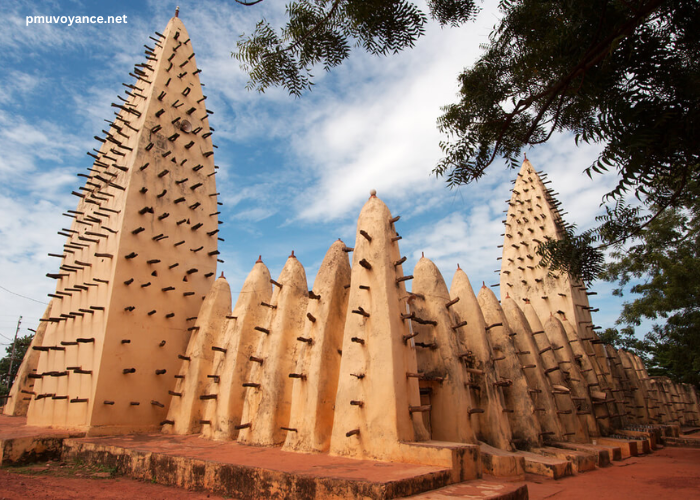Weather plays a crucial role in shaping daily life, activities, and even economic aspects in cities around the world. For the vibrant city of Bobo Dioulasso, located in Burkina Faso, understanding local weather conditions is essential for residents, businesses, and visitors alike. This article delves into the intricacies of Meteo Bobo Dioulasso, providing a comprehensive overview of the city’s climate, weather patterns, and the impact on daily life and planning.
The Climate of Bobo Dioulasso
Bobo Dioulasso experiences a tropical savanna climate, characterized by distinct wet and dry seasons. This climatic classification influences various aspects of life in the city, from agriculture and water resources to tourism and transportation. Understanding the climate is crucial for both residents and those planning to visit or engage in business activities in the region.
The city’s climate is heavily influenced by its geographical location. Situated in the southwestern part of Burkina Faso, Bobo Dioulasso benefits from a relatively stable temperature range throughout the year, though significant variations occur between the dry and wet seasons. This stability is a defining feature of tropical savanna climates, where temperatures generally remain warm or hot year-round, with notable seasonal fluctuations in precipitation.
Seasonal Weather Patterns
In Bobo Dioulasso, the year is divided into two primary seasons: the rainy season and the dry season. Each season has distinct weather characteristics that affect daily life and activities.
The Rainy Season: Typically lasting from May to October, the rainy season brings significant changes to the weather. During this period, Bobo Dioulasso experiences frequent and intense rainfall. Rainfall is usually heaviest from June to September, contributing to the lush vegetation and supporting agriculture in the region. The rainy season is characterized by high humidity, which can make the weather feel warmer and more oppressive. This period is essential for crops such as millet and sorghum, which are crucial for local food security.
The onset and intensity of the rainy season can vary from year to year, influenced by broader climatic patterns such as the West African monsoon. This variability can impact agricultural planning and water management strategies, making accurate weather forecasts and long-term climate trends particularly valuable for farmers and local authorities.
The Dry Season: From November to April, Bobo Dioulasso experiences its dry season. This period is marked by lower humidity, reduced rainfall, and clearer skies. Temperatures during the dry season can be quite high, particularly in the months of March and April. The dry season is characterized by a dry, dusty wind known as the Harmattan, which originates from the Sahara Desert and can affect air quality and visibility.
The dry season is crucial for various economic activities, including construction and travel. However, the high temperatures and dust can pose challenges, such as heat stress and respiratory issues, particularly for those not accustomed to such conditions.
Impact on Daily Life and Activities
The weather in Bobo Dioulasso has a significant impact on various aspects of daily life, including agriculture, transportation, and health.
Agriculture: Agriculture is a major part of life in Bobo Dioulasso, and the weather patterns directly influence crop yields and farming practices. The rainy season is critical for planting and growing crops, while the dry season affects harvests and soil conditions. Understanding weather forecasts helps farmers plan their activities and manage resources effectively, ensuring optimal crop production and food security.
Transportation: Weather conditions also affect transportation and infrastructure. During the rainy season, heavy rains can lead to flooding, which may disrupt travel and cause damage to roads and infrastructure. Conversely, the dry season’s dust can impact visibility and road conditions, requiring regular maintenance and precautions for safe travel.
Health: The health of residents is influenced by the weather in several ways. High temperatures during the dry season can lead to heat-related illnesses, while the increased humidity and rainfall during the rainy season can exacerbate conditions like respiratory infections and vector-borne diseases. Public health initiatives often focus on addressing these weather-related health challenges, promoting awareness, and providing resources for prevention and treatment.
Meteorological Services and Forecasting
Accurate weather forecasting is essential for managing the impacts of weather on daily life in Bobo Dioulasso. Local meteorological services play a key role in providing timely and reliable weather information, helping residents and businesses plan accordingly.
Meteo Bobo Dioulasso, the local meteorological service, offers weather forecasts, climate data, and advisory information to the public. This includes daily and weekly forecasts, as well as longer-term climate trends. The service uses various tools and technologies, including weather stations, satellite data, and forecasting models, to gather and analyze weather information.
For residents, accessing accurate weather forecasts helps in planning daily activities, such as travel, outdoor events, and health precautions. For businesses, particularly those in agriculture and construction, timely weather information is crucial for operational planning and risk management.
Challenges and Future Developments
Despite advancements in meteorological technology and forecasting, there are still challenges in accurately predicting weather patterns and their impacts. In regions like Bobo Dioulasso, the variability and unpredictability of weather can pose difficulties for long-term planning and decision-making.
One challenge is the impact of climate change, which can alter weather patterns and exacerbate extreme weather events. Increased variability in rainfall and temperature extremes may affect agriculture, water resources, and infrastructure. Addressing these challenges requires ongoing research, improved forecasting techniques, and adaptive strategies to manage the impacts of climate change.
Future developments in meteorology and technology hold promise for enhancing weather prediction and management. Advances in satellite technology, data analysis, and climate modeling can improve the accuracy of forecasts and provide more detailed insights into weather patterns. Additionally, increased collaboration between meteorological services, researchers, and local communities can help develop effective strategies for managing weather-related challenges.
Conclusion
Understanding the weather in Bobo Dioulasso is essential for navigating the city’s dynamic climate and its impact on daily life. With its distinct wet and dry seasons, the weather influences various aspects of life, including agriculture, transportation, and health. Accurate weather forecasting and meteorological services play a vital role in helping residents and businesses plan and adapt to changing conditions.
As the city continues to grow and face new challenges, advancements in meteorological technology and climate research will be crucial in managing the impacts of weather and climate change. By staying informed and utilizing weather forecasts effectively, Bobo Dioulasso can continue to thrive amidst its vibrant climate and dynamic environment.



